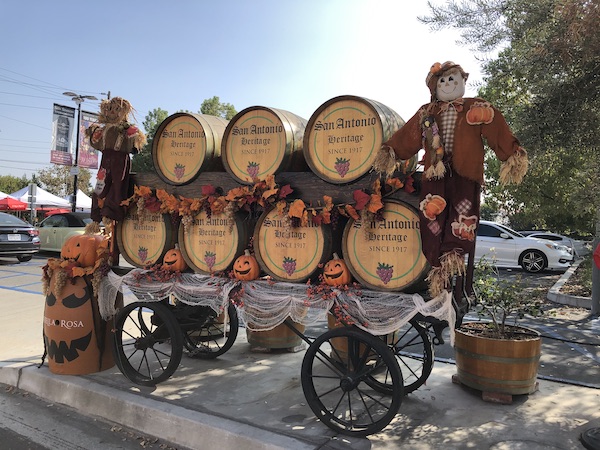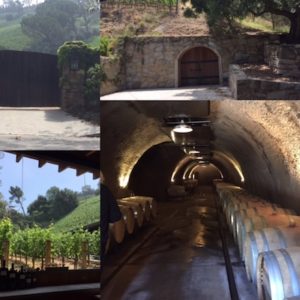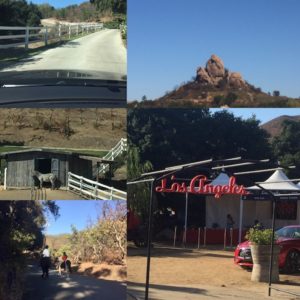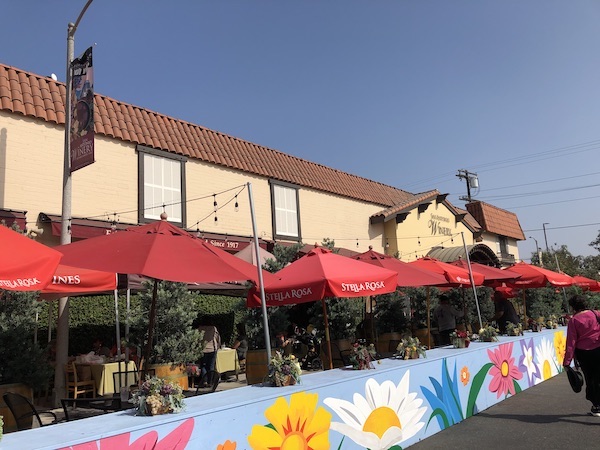CelebrateNational Red Wine Day with “Red Letter” LA Wineries
(Gerry Furth-Sides) When you drive down Vignes Street near Union Station in downtown Los Angeles, please remember to honor the road name with the proper “soundless S” French manner. Why, you may ask? This astonishing account of this historic street by Charles Perry, Founder of the Los Angeles Culinary Historians and esteemed cultural food writer explains. “Until 1831, L.A.’s only industry had been cattle,” Perry begins. “The first vineyards in America to make real table wine were planted right where L.A. City Hall is today.
The man who imported those Cabernet and other Bordeaux grapes was Jean-Louis Vignes. “Within 20 years, Vignes turned us into the wine capital of the country with over 400,000 grapevines in town,” he flatly states. “And the last link to this period was in the Valley — John McClure’s Burbank Winery, which was bulldozed in 1947.” But its history remains with streets like Vine and Vineland.” Since it is National Red Wine Day, let’s just talk about three of the most fascinating. The beauty of it all is that while wine lovers live in their own private world, outsiders are always welcome.
My first invitation came “one dark and stormy night” in January. Inside the warm kitchen of the Bel-Air Hotel (www.hotelbelair.com/dining) the first set up for an eight-course extravaganza by chef, Gary Clauson rose high on the stove. As we were seated, wide-eyed, our host informed us, “the sous chef just ran up the road for something special from our neighbor, Moraga wines.” Magical.
Moraga Red is an exquisite, highly esteemed blend of approximately 80% Cabernet Sauvignon and 20% Merlot. Aged in the finest French oak barrels for approximately 20 months, it is bottled and aged for over a year prior to release. Only a very limited selection is sold in high-end wine shops (www.moragavineyards.com).
The 16-acre winegrowing estate belongs to Tom and Ruth Jones. “We were inspired to “pursue winegrowing in Moraga Canyon because of the similar characteristics of its microclimate and soil to the Bordeaux region of France,” explains Jones. “This soil differentiates Moraga from other California appellations,” he boasts.
“It is due to being submerged under the Pacific Ocean for millions of years before the L.A. basin was thrust upward to create its current topography. So deep gravel beds line the canyon bottom and the hillside composition stems from an ancient seabed full of marine fossils and shells – ideal for growing high quality wine grapes.”
Nestled in a residential area, drive by the estate a hundred times, and I have, and hardly guess grapes have been growing behind the gate since 1978. Geometric precision allows 2,2000 vines per acre in the close space. Ten small vineyards hold 13,000 wines.
Next came at the invitation of the Los Angeles Culinary Historians (www.lapl.org/central/science.html). The invite was to a “summer picnic and vineyard exploration of Malibu’s new viticultural history in the making at the Rosenthal Winery”(www.rosenthalestatewines.com). The notice was scientific: To the west of the winery, situated at 1,450 to 1,510 feet, lays a 1,630-foot ridge, making a unique microclimate in the hills. Its steep and craggy terrain, warm days, gentle coastal breezes, and cool nights make it choice for grape growing.
To get ready for this serious tramp through the dirt in triple-digit weather, I tossed on a straw hat, old sundress and worn clogs. Was I ever surprised.
The Rosenthal gate on the scrubby Kanan Dune Road was almost invisible under a blinding sun. Once inside, though, an enchanted canopy of graceful tall Oaks shades the mile-long (hand laid) brick driveway to a spectacular Spanish mansion overlooking the glittering, teal Pacific Ocean.
During a luncheon served by a formal, wait staff, the congenial lord of this manor, George Rosenthal, a real estate investor who also happens to own Raleigh Studios and several hotels, introduced his superb wines to us. The only tramping turned out to be from the valet parker to the lush poolside tables.
George actually was the first of the three brave souls to give grape growing a whirl in Malibu. In 1987, he planted the first of his Bordeaux varietals, now flourishing on 25 acres. Soon after the release of his first wine, a 1991 Cabernet, his estate was granted the Malibu-Newton Canyon American Viticultural Area designation.
The second area grape grower was financial advisor, Kevin Jussila. He planted Syrah vines in 1996 ìas a hobby because I loved gardening. I thought it would be fun.” He grins, “ignorance is bliss.” Jussila’s “hobby” grew to include 1,650 1.5 acres and a small production schedule. The reward: “People’s expectations of Malibu wines are really low, so it’s great when they tasted it and said, ‘Wow!'”
And that ìwowî eventually moved Jussila to currently produce organic reds on a family farm in Paso Robles. (kukkulawine.com). Kukkula, by the way, means ìhillî in Finnish.
The rich, fascinating history of the nearby Semler Family home at Saddlerock Ranch (www.malibufamilywines.com) begins over three centuries ago when the vast expanse of land surrounding the Santa Monica Mountains was once part of the original Spanish Land Grant. Semler began by yanking out 8,000 avocado trees on his 60-acre hilltop Malibu property, telecommunications executive, and Semler Malibu Estate Wine and Saddlerock Vineyard owner, Ron Semler, replaced them with grapes. In return, he earned his own Malibu appellation with Cabernet Sauvignon, Merlot, and Syrah.
Wine pairing dinners with the young Saddlerock and Rosenthal grapes challenge even the most wildly talented and experienced of chefs, such as game-expert Warren Schwartz, formerly of Saddlepeak Lodge. Easy-going Schwartz admits, “the less robust and yet tannic wines are nothing like Napa wines.” They require a lot of thought even for an experienced chef like myself.”
Tami Semler maintains that Malibu boasts its own “Terroir, (that means “distinctive taste of the land all its own”). Even now, Rosenthal differs from Semler because they have a lower elevation than we do,” Semler points out. “Semler is our 100% local estate grown while Saddlerock grapes are central coast.
“But,” she grins; “The most important thing is that we want as many people as possible to drink Malibu wines and we have been successful so far despite natural disasters. Our lush tasting room looks out on a three-acre outdoor park-like setting with century old oak and olive trees across from the 1500 vines.
For an initial taste of Semler wines, try Charlie Wasserman’s Green Jug in the valley, “our big supporters and a great wine store,” Tami invites, and Wade Schlosser’s Wade’s wines in Agoura. Tami, oldest of the nine Semler children, can also “turn your backyard into a Tuscan Paradise vineyard. We will survey your site, design your vineyard, lay out the rows, order the vines, prepare the soil, install the trellis and irrigation and plant the vines for you,” she lists. “We’ll even manage it for you if you’re pressed for time. “It all began when my neighbor asked for help with his vineyard,” she recalls. “Now it provides work for my staff in the off season, and now we’re fully booked. We’ve planted vineyards from Santa Barbara all the way to Hollywood.”
Certainly something to dream about these days.





 Gerry Furth-Sides
Gerry Furth-Sides  Barbara Hansen
Barbara Hansen  Chef-owner Alain Cohen
Chef-owner Alain Cohen  Roberta Deen
Roberta Deen  Jose Martinez
Jose Martinez  Nivedita Basu
Nivedita Basu